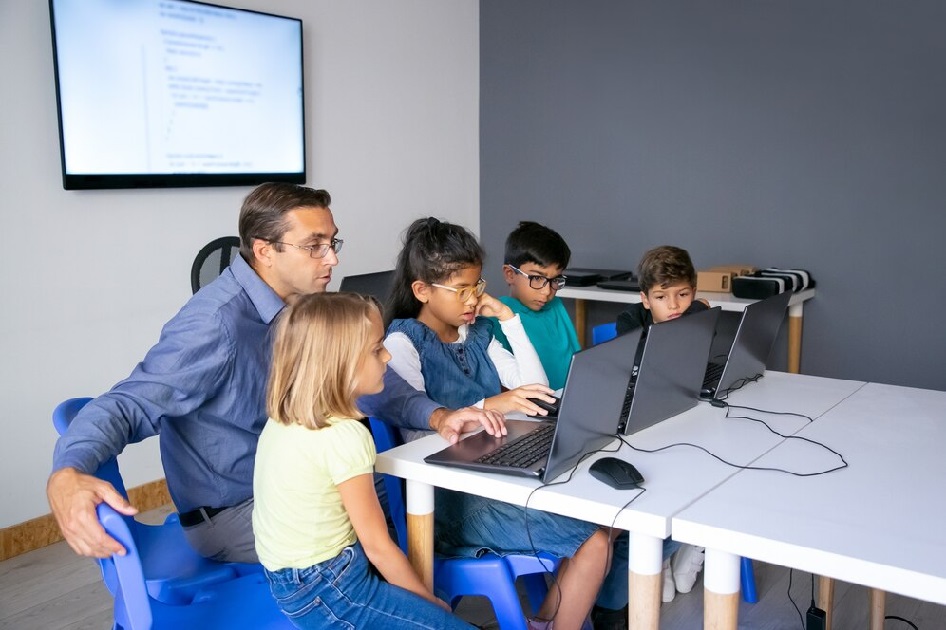The modern classroom is evolving rapidly, with technology playing a pivotal role in shaping how teachers deliver lessons and students engage with learning materials. One of the most significant advancements in this regard is the introduction of the “classroom screen.” But what exactly is a classroom screen, and how is it transforming education?
Introduction
In recent years, technology has made its way into classrooms, revolutionizing the traditional learning environment. Among these innovations, the “classroom screen” stands out as a game-changer. This article explores what a classroom screen is, its benefits, and how it’s reshaping education for the better.
What is a Classroom Screen?
A classroom screen, often referred to as an interactive whiteboard or digital display, is a large, touch-sensitive screen used in classrooms to display content and facilitate interactive learning. Unlike traditional chalkboards or whiteboards, classroom screens can connect to the internet, display multimedia content, and allow for direct interaction through touch or stylus input.
The Evolution of Classroom Technology
From Chalkboards to Smartboards
Remember the days of chalk dust and squeaky markers? The evolution from traditional chalkboards to whiteboards was a significant step, but the introduction of smartboards and classrooms has taken things to a whole new level. These screens integrate the capabilities of computers, projectors, and whiteboards into a single device.
The Digital Classroom
The digital classroom is no longer a futuristic concept; it’s a reality. Classroom are at the heart of this transformation, enabling teachers to create dynamic, multimedia-rich lessons that cater to diverse learning styles.
Key Features of Classroom Screens
Touch Sensitivity
One of the standout features of classroom is their touch sensitivity. This allows students and teachers to interact directly with the screen, making learning more hands-on and engaging.
Multimedia Integration
Classroom screens can display videos, animations, and interactive simulations, bringing subjects to life and making complex concepts easier to understand.
Internet Connectivity
With internet connectivity, screens provide access to a wealth of online resources, from educational websites to cloud-based lesson plans and collaborative tools.
Screen Sharing
Screen sharing capabilities enable teachers to display content from their computers or mobile devices directly onto the classroom screen, facilitating seamless lesson delivery.
Benefits of Using Classroom Screens
Enhanced Learning Experience
Classroom make lessons more engaging and interactive, helping students to better retain information and develop critical thinking skills.
Increased Student Participation
Interactive features encourage students to participate actively in lessons, fostering a more inclusive and collaborative learning environment.
Personalized Learning
Teachers can tailor lessons to meet the needs of individual students, using the classroom to provide differentiated instruction and support diverse learning styles.
Enhancing Student Engagement
Interactive Lessons
Interactive lessons are more engaging than traditional lectures. With classroom, teachers can incorporate quizzes, polls, and interactive activities that keep students involved and motivated.
Visual and Kinesthetic Learning
Classroom screens cater to visual and kinesthetic learners by incorporating multimedia content and interactive touch features, making learning more accessible and enjoyable.
Facilitating Interactive Learning
Collaborative Projects
Classroom screens support collaborative learning by allowing multiple students to work together on projects, share ideas, and present their findings to the class.
Real-Time Feedback
Teachers can provide real-time feedback using the screen’s interactive features, helping students to understand their mistakes and improve their performance on the spot.
Real-World Applications
STEM Education
In STEM (Science, Technology, Engineering, and Mathematics) education, classrooms are invaluable tools. They enable the visualization of complex scientific phenomena, the simulation of engineering problems, and the exploration of mathematical concepts in a dynamic way.
Language Learning
For language learning, classroom screens can display multimedia resources such as videos, audio recordings, and interactive exercises that enhance listening, speaking, reading, and writing skills.
Art and Design
In art and design classes, classroom screens allow students to create and manipulate digital artworks, explore design concepts, and collaborate on creative projects.
Overcoming Challenges
Cost and Accessibility
While classroom screens offer many benefits, they can be expensive. Schools need to consider the cost and find ways to make this technology accessible to all students, regardless of budget constraints.
Teacher Training
Effective use of classroom screens requires proper training. Schools must invest in professional development to ensure teachers are comfortable and proficient with this technology.
Future of Classroom Screens
Technological Advancements
As technology continues to advance, classroom screens will become even more sophisticated, offering new features and capabilities that further enhance the learning experience.
Integration with Other Technologies
Future classroom screens will likely integrate with other educational technologies, such as virtual reality (VR) and augmented reality (AR), creating even more immersive and interactive learning environments.
Choosing the Right Classroom Screen
Factors to Consider
When choosing a classroom screen, schools should consider factors such as size, resolution, touch sensitivity, and connectivity options to ensure they select the best device for their needs.
Budget and Support
It’s also important to consider the budget and availability of technical support. Investing in a high-quality screen is essential, but schools must also ensure they have the resources to maintain and repair the equipment as needed.
Training and Support for Teachers
Professional Development
Ongoing professional development is crucial for teachers to stay up-to-date with the latest technology and teaching methods. Schools should provide regular training sessions and workshops to help teachers make the most of classroom screens.
Technical Support
Having a dedicated technical support team can help teachers troubleshoot issues quickly, ensuring that technical difficulties do not disrupt the learning process.
Case Studies: Success Stories
Example 1: Improving Math Scores
At XYZ Elementary School, the introduction of classroom screens has significantly improved math scores. Teachers use the screens to demonstrate problem-solving techniques, display interactive math games, and provide immediate feedback, making math more engaging and understandable for students.
Example 2: Enhancing Collaboration
At ABC High School, classroom screens have enhanced collaboration among students. In history classes, students use the screens to work together on group projects, research historical events, and present their findings, fostering a deeper understanding of the subject matter.
Environmental Impact
Reducing Paper Usage
Classroom screens help reduce paper usage by allowing teachers to distribute and collect assignments digitally, share resources online, and conduct assessments electronically.
Energy Consumption
While classroom screens consume energy, newer models are designed to be energy-efficient. Schools can further reduce their carbon footprint by using screens in combination with other green technologies.
Conclusion
Classroom screens are transforming education, making lessons more interactive, engaging, and personalized. By integrating this technology into classrooms, schools can enhance the learning experience, improve student outcomes, and prepare students for a tech-savvy future. As we move forward, it’s essential to address the challenges and ensure that all students have access to the benefits of classroom screens.
=================================================================================================
FAQs
1. What is a classroom 6x?
A classroom 6x is a large, touch-sensitive display used in classrooms to facilitate interactive learning. It can connect to the internet, display multimedia content, and allow for direct interaction through touch or stylus input.
2. How do classroom screens enhance student engagement?
Classroom enhance student engagement by making lessons more interactive and dynamic. They incorporate multimedia content, interactive activities, and real-time feedback, which keep students involved and motivated.
3. Are classroom screens expensive?
Classroom can be expensive, but their cost is offset by the benefits they provide. Schools can look for funding opportunities or grants to help cover the costs and make this technology accessible to all students.
4. What training do teachers need to use classroom 6x effectively?
Teachers need professional development and ongoing training to use classroom effectively. This includes learning how to integrate the technology into their lessons, troubleshoot technical issues, and leverage the interactive features to enhance learning.
5. What is the future of classroom 6x in education?
The future of classroom in education looks promising, with advancements in technology making these devices even more powerful and versatile. Future screens may integrate with VR and AR, creating more immersive and interactive learning environments.
Read More: Exploring ARC018 Alternatives: The Ultimate Guide






